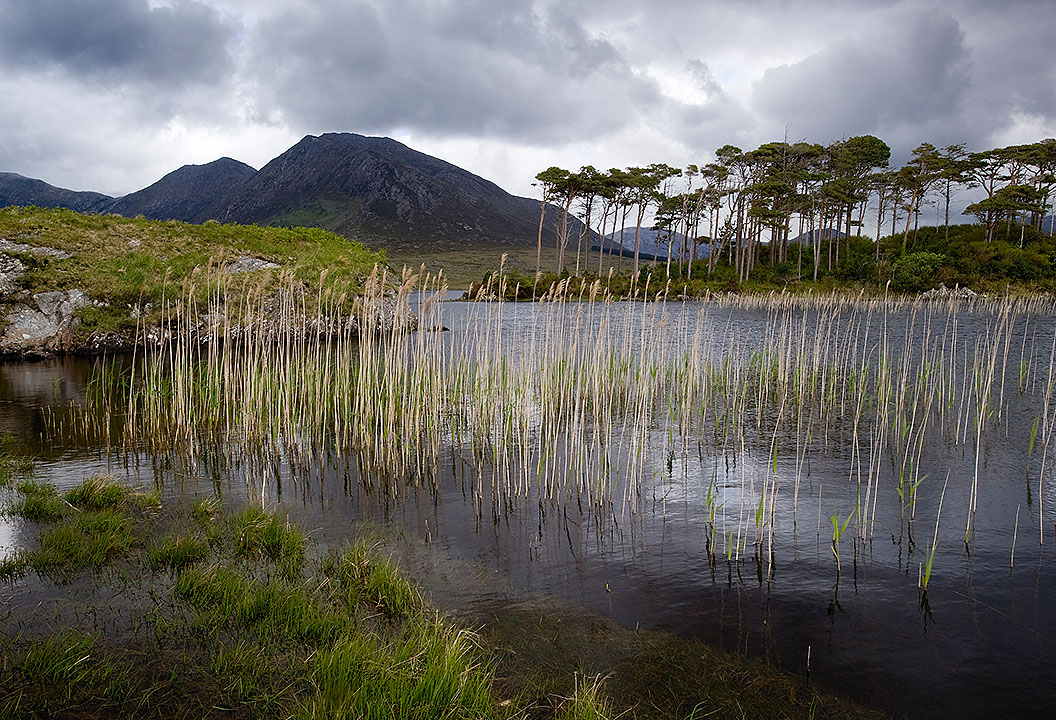The Connecticut River’s Trophy Stretch: In the previous post I mentioned that the Connecticut River’s Trophy Stretch is only a stones throw from Lopstick Lodge in Pittsburg, New Hampshire. Lopstick has great accommodations, and great guides offering both wade and drift boat trips in the area. Okay we’re ready now to delve more into the fly-fishing you’ll find in these attractive northern waters. Been there many times. (2011 post) Lets go.

The Connecticut River’s Trophy Stretch
The Trophy Stretch begins at the dam on First Connecticut Lake. This is a bottom release tailwater fishery that extends downstream to Lake Francis, some 2.5 miles away. All of it is productive water. And public access is good overall, with some spots requiring a walk in the woods.
Dam Releases: Like all tailwater fisheries, dam releases greatly affect the fishing. The ideal, and most common level during the prime spring season is 150 cfs. You can find the dam release levels at this link. Check before you head up, and even after you arrive. The front desk at the lodge will know the release schedule.
Gear: Hip boots are adequate in a few spots, but chest waders are better overall. At 150 cfs, the wading is the fairly easy, although I still suggest felt soles. If you fish up by the dam, however, cleats are a major help. Even at 150 cfs, the water in the gorge is swift, and the bottom extremely slick. A wading staff makes mucho sense too. Be careful.
An 8′ 6″ 4 or 5 weight fly rod is ideal for the Trophy Stretch, although longer rods are useful when nymphing. Floating fly lines and 9′ leaders tapered to 4x are standard, but at times, especially when fishing dries, 5x tippets are better, and a few folks go to 6x.

The Connecticut River’s Trophy Stretch
Season: Weather permitting, late May can be very good, but June to mid-July is considered prime time in the Trophy Stretch. The majority of the fish you’ll encounter are small, stocked rainbows. They’re everywhere, but don’t be fooled. Mixed in with them are much larger rainbows and brook trout, some in the 2-4 pound class. And all of these fish are supplemented by wild, native fish traveling upstream from Lake Francis. During the cooler months, these migrants include a fair number of landlocked salmon, typically ranging in size from 12″ to 20″.

Landlocked Salmon
It isn’t necessary to hit the stream at the crack of dawn or stay until dark, for that matter. The trout bite all day long. So after breakfast, free feel to lounge on the cabin porch with a second cup of Joe. If you’re gunning for the biggest trout, however, its best to be on the water early and late in the day. And that goes for the landlocks too, and they are a hoot, believe me!
The net bag pictured above is 19″ long, and so is this salmon. Streamers are effective for salmon, no question, still day-in-out nymphs are, in my opinion, more deadly. Don’t like to nymph? Soft hackles wets are very good as well. (trout love’em too) Will the landlocks take a dry? Yes, in fact, these silver rockets can grab it so fast, they are back down with the fly before you realize it. Next thing you know, they’re somersaulting across the pool.
Fly Selection: A lot of flies work in the Trophy Stretch, but here’s a short list of some favorites. Dry Flies: 14-16# tan Caddis, 18-20# Blue Wing Olives, 14-18 Cahills, 10-8# Stimulators (yellow belly), and most terrestrials patterns. Wets: San Juan worms in red, pink or even white. Soft Hackles: 12-14# Partridge & Orange or Partridge & Green (I like both with bead heads). Nymphs: 12-16# Bead Head Caddis Pupa in tan or green, 12-14# Prince nymphs, 14-16# Copper Johns, 14-16# Pheasant Tails, 10-12# Black and Yellow Stone Flies. Streamers: Woolly Buggers, Muddlers, Grey Ghosts, and other traditional landlock streamers (including lesser known ones like the Brown Owl, and the “88”).
Other Area Waters: Once you’re up here you have other waters to investigate. Back Lake is just down the road and has a Hex hatch towards the end of June. You’ll need a canoe, a kayak, or a belly boat. Those same crafts, however, will also allow you to fish several area trout ponds. Ask the lodge for directions. And there is a tailwater fishery below Murphy Dam on Lake Francis. It’s home to some of the largest trout in the Northeast.
PS: If you bring split shot be sure its the eco-friendly stuff. No lead shot allowed. And please practice catch & release, especially with those large fish. Return them to the water so other anglers can enjoy them too.


























